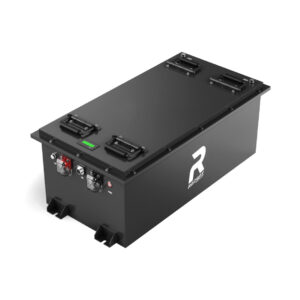What Are the Essential Guidelines for Watering RV Deep-Cycle Batteries?
Proper maintenance of RV deep-cycle batteries is crucial for ensuring reliable power during travels. Among various maintenance tasks, watering remains one of the most critical yet often misunderstood processes. This guide explores best practices to optimize battery performance and longevity.
Essential Safety Precautions for RV Batteries
How Often Should You Water an RV Deep-Cycle Battery?
Watering frequency depends on usage, temperature, and battery type. Check electrolyte levels every 4-6 weeks during active use. In hot climates or heavy cycling, inspect monthly. Use distilled water to refill cells when plates are exposed, ensuring levels stay ¼” below the fill well. Overwatering risks acid dilution; underwatering accelerates sulfation. Always charge before checking to avoid uneven levels.

Extended content: Seasonal changes significantly impact watering needs. During summer road trips through arid regions like the Southwest, evaporation rates can triple compared to coastal climates. RVers should carry extra distilled water and perform visual checks every 2-3 weeks in these conditions. Winter storage introduces different challenges—batteries stored in cold environments (<32°F) experience slower water loss but require complete charging before storage to prevent electrolyte freezing. A practical method involves documenting water consumption patterns using a maintenance log. For example:
| Temperature Range | Inspection Frequency | Average Water Added |
|---|---|---|
| 50-77°F | 6 weeks | 4-8 oz |
| 78-95°F | 3 weeks | 8-12 oz |
| 96°F+ | 2 weeks | 12-16 oz |
What Tools Are Needed for Proper Battery Watering?
Essential tools include a distilled water jug with narrow spout, refractometer (for specific gravity checks), turkey baster (for removing excess), and safety gear—goggles and acid-resistant gloves. Advanced users employ automatic watering systems like Flow-Rite with float valves. Avoid metal funnels; static from plastic can ignite hydrogen gas. Always follow OSHA’s battery safety protocols.
RV Battery Water Level Check Frequency
Extended content: Building a comprehensive battery maintenance kit requires both basic and specialized tools. For casual users, a $15 hydrometer and $2 turkey baster suffice for occasional checks. Full-time RV nomads should consider investing in a $120 digital refractometer for precise specific gravity measurements and a $200 Flow-Rite Pro-Fill system that connects to multiple batteries simultaneously. Safety remains paramount—neoprene gloves ($12-25) protect against acid splashes, while explosion-proof LED work lights ($45) prevent hydrogen ignition. Below shows tool effectiveness comparisons:
| Tool | Purpose | Cost Range |
|---|---|---|
| Plastic funnel | Spill-free refills | $3-8 |
| Automatic filler | Multi-battery systems | $175-300 |
| Hydrometer | Electrolyte testing | $10-20 |
Why Do RV Deep-Cycle Batteries Require Regular Watering?
Electrolysis during charging splits water into hydrogen and oxygen, reducing electrolyte volume. Maintenance prevents plate exposure, which causes irreversible sulfation and capacity loss. Proper watering maintains acid concentration for efficient electron transfer. AGM and gel batteries are sealed, but flooded lead-acid types—common in RVs—require manual replenishment to sustain performance.
How Does Temperature Affect Watering Requirements?
Heat accelerates water loss: every 15°F above 77°F doubles evaporation. In desert climates, check biweekly. Cold increases stratification risk—stir electrolyte gently after refilling if batteries aren’t equalized regularly. Use insulated battery boxes to moderate temperature extremes. Winter storage requires full charging and watering before downtime to prevent freezing of low electrolyte.
Can Overwatering Damage RV Deep-Cycle Batteries?
Yes. Overfilling causes acid spillage, corroding terminals and tray components. Excess water dilutes electrolyte, reducing voltage output and freezing point. Use the “split-level” rule: fill discharged batteries to cover plates, then charge fully before topping to ¼” below fill well. Hydrolock sensors in modern systems alert when levels exceed 80% capacity.
What Are the Signs of Improper Watering Practices?
Symptoms include swollen battery cases (overcharging + low water), white sulfate crust on terminals, and voltage drop below 10.5V under load. Hydrometer readings below 1.225 indicate under-watering; above 1.300 suggests over-concentration. Thermal imaging shows hot spots in cells with unequal levels. Always perform load testing after watering to verify recovery.
How Do Sealed vs. Flooded Batteries Differ in Maintenance?
Flooded batteries (e.g., Trojan T-105) require manual watering and monthly checks. Sealed AGM (Absorbent Glass Mat) types recombine 99% of gases internally but still lose 1-3% water annually. Gel batteries are maintenance-free but cost 2x more. For RVs with irregular use, AGM is preferable despite higher upfront cost. Trojan’s RE series offers hybrid solutions.
Expert Views
“Modern RV batteries demand precision hydration,” says Redway’s lead engineer, Mark Tolbert. “We’re seeing 23% longer cycle life in systems using smart sensors that trigger watering alerts via Bluetooth. Pair this with lithium-like BMS for flooded batteries, and you get AGM convenience without ditching lead-acid economics. Always prioritize battery-specific guidelines over generic advice.”
FAQ
- Q: Can I use bottled drinking water instead of distilled?
- A: No—bottled water still contains minerals. Only distilled or demineralized options prevent mineral buildup.
- Q: Should I water batteries before or after charging?
- A: Always charge first. Charging raises electrolyte levels; topping up afterward prevents overflow.
- Q: Do lithium RV batteries need watering?
- A: No. Lithium-ion batteries are completely sealed and maintenance-free, unlike lead-acid types.
